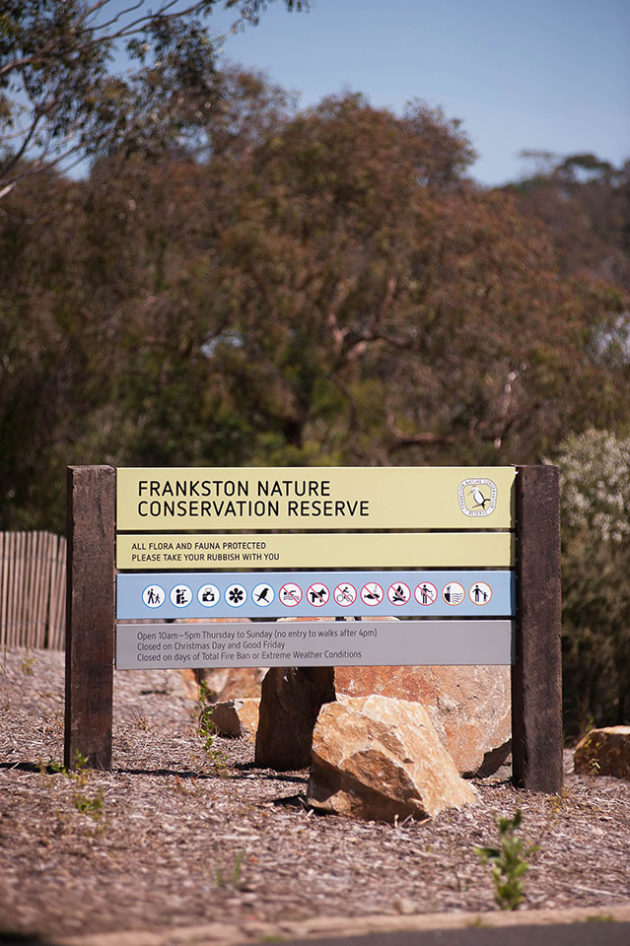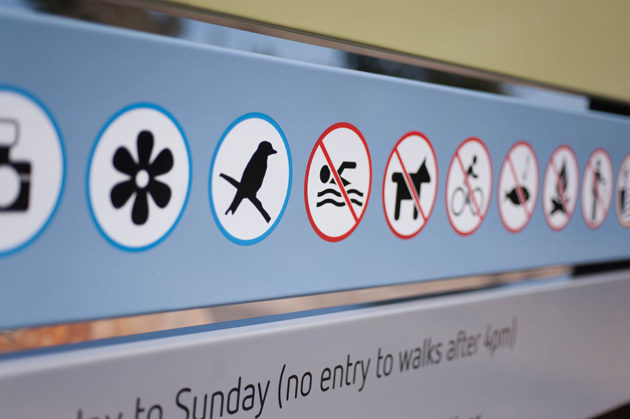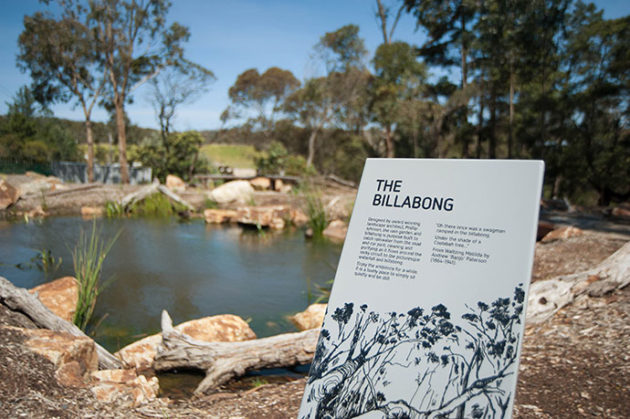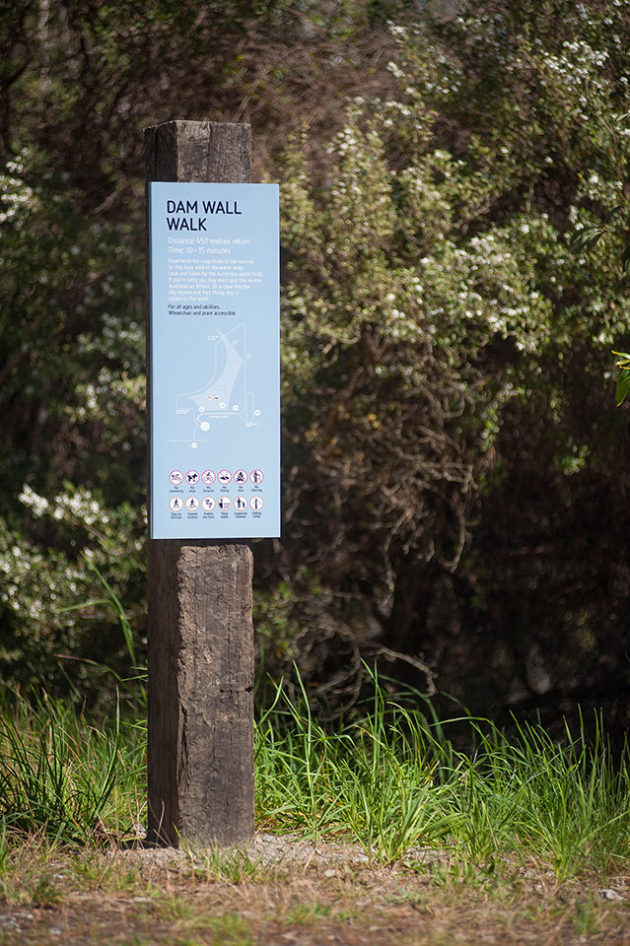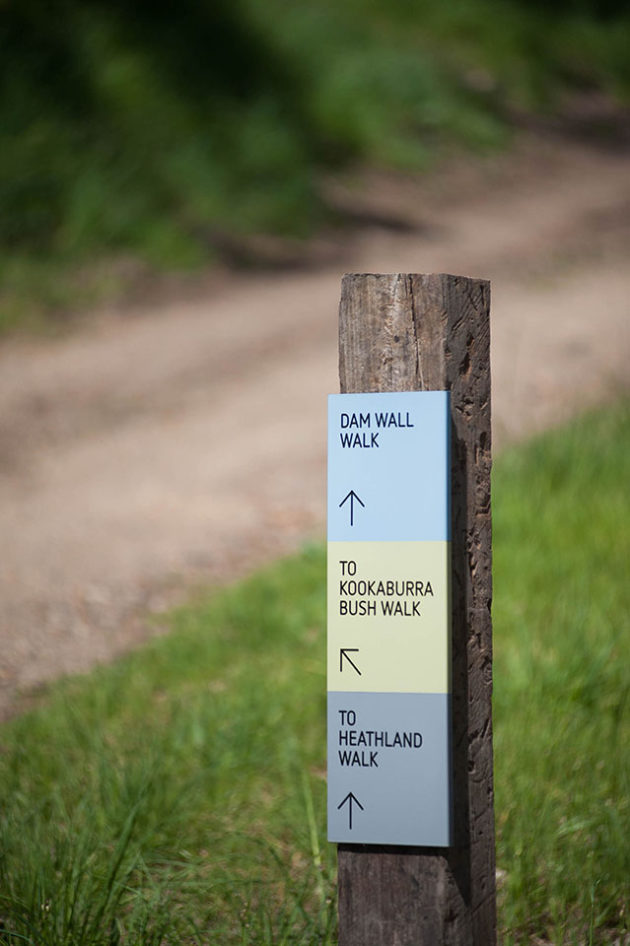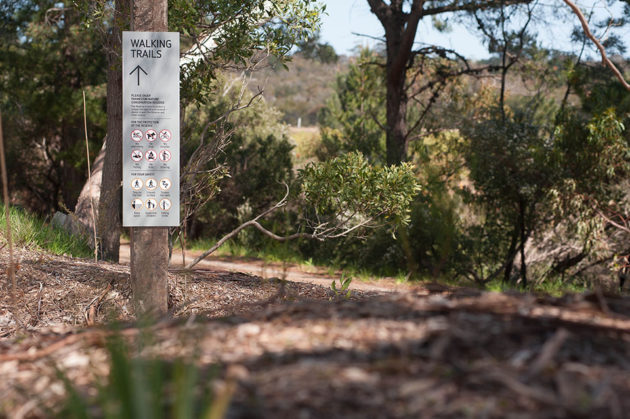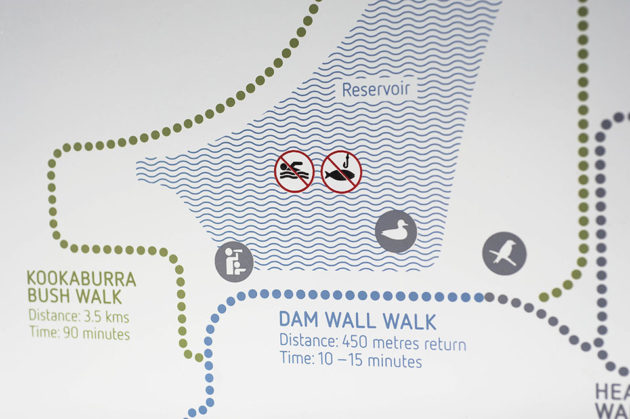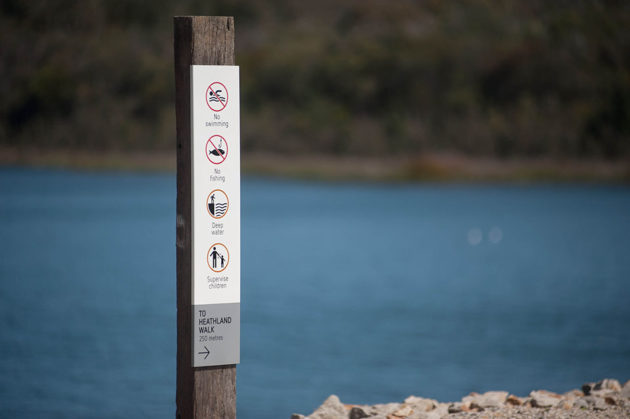Frankston Nature Conservation Reserve
Client: Frankston Nature Conservation Reserve Committee of Management
Location: Frankston, Victoria, Australia
Scope: Design, illustration, writing, mapping, management of fabrication and installation
Year: 2016
Team: Mike Heine, Steve Jones, Larni Williams
More >
The Frankston Nature Conservation Reserve was opened to the public in 2016 for the first time – after being closed to the public for over fifty years – its previous use as the local water catchment and reservoir preventing public access. The reserve contains significant areas of remnant bush land and is home to many species of flora and fauna.
New signage infrastructure was required to ensure the reserve was suitable for public access – including information, orientation, wayfinding, regulatory and interpretive solutions. Visitors needed to understand the importance, and fragility, of the reserve. They also needed guidance to, and around, walking trails of varying grades and lengths. Public safety risk, along with the fragile nature of the reserve, required a carefully designed regulatory information system. A history of vandalism within the reserve demanded a solution which was robust and resistant to graffiti.
HeineJones guided our client through a thorough design, content, user journey and information hierarchy development process – as our client had not implemented a signage project of this nature before.
The solution included identification, regulatory, information, interpretive, wayfinding and trail head signage. A ‘national park’ feeling was subtly incorporated into the design, communicating a significance of place. A clear mapping system was developed to orient visitors.
Materiality included vitreous enamel panels and reclaimed timber posts – ensuring an effective Life Cycle Cost benefit.
HeineJones designed a ‘cascading’ regulatory information system to ensure that visitors, and the reserve, are safe and protected – and that a positive regulatory message is presented.
The HeineJones solution has created a place which is legible and understandable to visitors. The design provides a significant contribution to the aesthetic of the reserve. Public behaviour and interaction with the reserve has changed to meet the desired outcome. The Committee of Management are delighted with the result.
< Less
